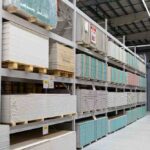Introduction to the Importance of Recycling Non-PCB Ballasts
The world is becoming increasingly conscious of the environmental impact of waste, and facility managers, sustainability enthusiasts, and environmental compliance officers are at the forefront of this movement. Among the diverse range of waste products, non-PCB ballasts are often overlooked despite their significant environmental footprint. Recycling these components not only helps reduce waste but also ensures compliance with environmental regulations. This blog aims to shed light on the importance of recycling non-PCB ballasts, offering a comprehensive guide on how to start.
Recycling non-PCB ballasts is crucial for sustainable facility management. These components, commonly used in fluorescent lighting fixtures, can lead to environmental harm if disposed of improperly. By understanding their importance, risks, and regulatory landscape, facility managers can make informed decisions that align with their sustainability goals. Through this post, we will explore the benefits, challenges, and step-by-step processes of non-PCB ballast recycling, equipping you with the knowledge to implement eco-friendly solutions.
Join us as we explore the easy and convenient ways to recycle non-PCB ballasts, ensuring your facility thrives sustainably while remaining compliant with environmental standards. You’ll learn how to choose the right service provider, follow a step-by-step recycling process, and leverage case studies of successful implementations to inspire your efforts.
Understanding Non-PCB Ballasts: Uses, Risks, and Regulations
Non-PCB ballasts are integral to fluorescent lighting systems, playing a critical role in regulating the current and voltage to the lamps. Unlike PCB ballasts, which contain polychlorinated biphenyls, non-PCB ballasts are considered safer and eco-friendlier. Despite this, they still contain components that require careful disposal to avoid environmental harm and legal repercussions. Understanding the uses, risks, and regulations associated with non-PCB ballasts is essential for facility managers aiming to maintain sustainable practices.
The primary risk associated with non-PCB ballasts lies in their potential to contribute to landfill waste and environmental pollution. While they don’t pose the same level of hazard as PCB ballasts, improper disposal can still lead to the leaching of metals and other harmful components into the environment. This can contaminate soil and water, leading to severe ecological consequences. Therefore, regulatory bodies like the Environmental Protection Agency (EPA) stipulate specific guidelines for their disposal and recycling.
Adhering to these regulations is not just about compliance; it’s a step towards sustainability and environmental stewardship. By recycling non-PCB ballasts, facilities can mitigate risks, reduce their environmental footprint, and promote a greener future. The following sections will provide insights into the environmental impact of non-PCB ballast disposal and the benefits of opting for recycling services.
The Environmental Impact of Non-PCB Ballast Disposal
When non-PCB ballasts are discarded in landfills, they contribute to a growing environmental problem. Although non-PCB ballasts are labeled as “safer,” they can still contain metals and other components that may harm ecosystems when not processed correctly. Over time, these materials can leach into the soil and water systems, posing threats to wildlife and human health.
Landfills are not designed to handle the complex compositions of electronic waste, including non-PCB ballasts. The improper disposal of these items leads to the accumulation of waste in landfills, increasing the strain on already overburdened waste management systems. This not only exacerbates environmental issues but also highlights the urgent need for effective recycling solutions.
By choosing to recycle non-PCB ballasts, facilities can prevent these materials from entering landfills, reducing pollution and conserving natural resources. Recycling enables the recovery of valuable materials that can be reused in new products, driving circular economy initiatives. The next segment will explore the challenges faced in traditional disposal methods and the necessity of specialized recycling services.
Challenges of Traditional Disposal Methods and the Need for Recycling Services
Traditional disposal methods for non-PCB ballasts often involve sending them to landfills or incinerating them. Both options have significant drawbacks. Landfilling contributes to environmental degradation, while incineration releases harmful emissions into the atmosphere. These methods fail to recover valuable materials within the ballasts, resulting in resource waste and missed opportunities for sustainability.
The complexity of handling electronic waste like non-PCB ballasts further complicates traditional disposal. Facility managers may lack the expertise or resources to ensure proper disposal, leading to unintentional non-compliance with environmental regulations. Such non-compliance can result in fines and reputational damage, further underscoring the challenges of conventional disposal.
These challenges underscore the importance of engaging specialized recycling services. Non-PCB ballast recycling services offer tailored solutions to manage and process these components responsibly. By leveraging the expertise and infrastructure of recycling providers, facilities can overcome traditional disposal challenges while contributing to environmental preservation. The following section will highlight the benefits of utilizing recycling services for non-PCB ballasts.
Benefits of Utilizing Non-PCB Ballast Recycling Services
Opting for non-PCB ballast recycling services provides facilities with multiple advantages that extend beyond compliance. One of the primary benefits is environmental conservation. Recycling services ensure that the materials within the ballasts are processed and reused, reducing the demand for raw materials and minimizing environmental impact. This contributes to a more sustainable use of resources and promotes a circular economy.
Recycling services also offer convenience and efficiency. With specialized processes and technologies, recycling providers can handle large volumes of ballasts quickly and effectively. This saves facility managers time and effort, allowing them to focus on other critical aspects of operations. Additionally, many recycling services offer pickup and transportation options, simplifying the recycling process for facilities.
Lastly, utilizing recycling services can enhance a facility’s reputation and commitment to sustainability. As consumers and stakeholders increasingly prioritize eco-friendly practices, facilities that adopt recycling initiatives can improve their brand image and strengthen their market position. The next section will provide guidance on selecting the right recycling service provider to maximize these benefits.
How to Choose the Right Recycling Service Provider
Selecting the right recycling service provider is crucial for ensuring effective and responsible disposal of non-PCB ballasts. The first step is to assess the provider’s credentials and expertise. Look for certifications and accreditations that demonstrate their compliance with industry standards and regulations. A reputable provider should have a proven track record of handling electronic waste safely and efficiently.
Consider the range of services offered by the provider, including pickup, transportation, and processing capabilities. Opt for providers that offer comprehensive solutions to simplify the recycling process for your facility. It’s also important to inquire about their processes for material recovery and reuse, as this indicates their commitment to sustainability.
Customer reviews and testimonials can provide valuable insights into the provider’s reliability and quality of service. Seek feedback from other facilities that have used their services to gauge their satisfaction and experiences. By carefully evaluating potential providers, you can choose one that aligns with your sustainability goals and ensures responsible disposal of non-PCB ballasts. The upcoming section will provide a step-by-step guide to implementing recycling services in your facility.
Step-by-Step Guide to Recycling Non-PCB Ballasts
Recycling non-PCB ballasts involves several key steps to ensure efficient and responsible disposal. The first step is to conduct an inventory of the ballasts in your facility to determine the quantity and types that require recycling. This information will help you plan and coordinate the recycling process effectively.
Once you’ve assessed your inventory, contact a reputable recycling service provider to discuss your needs and schedule a pickup. Many providers offer flexible options for pickup and transportation, making it easy to initiate the process. Ensure that you provide accurate information about the ballasts to facilitate smooth logistics.
When the recycling provider collects the ballasts, they will transport them to their facility for processing. This typically involves dismantling the ballasts to separate and recover valuable materials. The provider may also provide documentation to confirm the recycling process and compliance with regulations. By following these steps, you can streamline the recycling of non-PCB ballasts and contribute to sustainable waste management.
Case Studies: Successful Implementation of Recycling Services
Real-world examples of successful non-PCB ballast recycling can inspire facility managers to implement similar initiatives. Consider the case of a large commercial building that faced challenges with traditional disposal methods. By partnering with a specialized recycling service, they were able to efficiently recycle a significant volume of non-PCB ballasts, reducing their environmental impact and achieving compliance with regulations.
Another example is a university campus that integrated recycling services into their sustainability program. Through collaboration with a recycling provider, they developed a streamlined process for collecting and recycling non-PCB ballasts, resulting in improved waste management and enhanced campus sustainability.
These case studies highlight the positive outcomes that can be achieved through effective recycling partnerships. By learning from the experiences of others, facilities can implement successful recycling initiatives that align with their sustainability objectives. The next section will explore the future of non-PCB ballast recycling and emerging sustainable practices.
Future of Non-PCB Ballast Recycling and Sustainable Practices
The future of non-PCB ballast recycling holds promising advancements in technology and sustainable practices. Innovations in recycling processes are enabling more efficient recovery of materials, reducing waste and enhancing resource conservation. Emerging technologies also offer opportunities for greater transparency and traceability in the recycling supply chain, ensuring responsible disposal from start to finish.
Sustainable practices are gaining momentum across industries, and non-PCB ballast recycling is no exception. Facilities are increasingly integrating recycling initiatives into their broader sustainability strategies, leveraging collaboration and innovation to reduce their environmental footprint. This trend is expected to continue as organizations prioritize eco-friendly practices to meet regulatory requirements and stakeholder expectations.
By staying informed about the latest developments in non-PCB ballast recycling, facility managers can remain at the forefront of sustainable waste management. The next section will conclude with actionable steps for facilities looking to empower themselves with eco-friendly solutions.
Conclusion: Empowering Facilities with Eco-Friendly Solutions
Recycling non-PCB ballasts is a vital component of sustainable facility management. By understanding their importance, environmental impact, and the benefits of recycling services, facility managers can make informed decisions that drive positive change. Engaging recycling service providers not only ensures regulatory compliance but also contributes to a greener and more sustainable future.
Facility managers, sustainability enthusiasts, and environmental compliance officers have the power to lead the charge in adopting eco-friendly practices. By following the steps outlined in this blog, you can successfully implement non-PCB ballast recycling initiatives that align with your sustainability goals. For facilities eager to explore eco-friendly solutions further, consider engaging with experts and resources dedicated to sustainable waste management.
Together, we can create a more sustainable world, one recycled non-PCB ballast at a time.
























